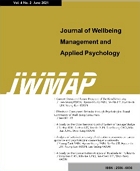 E-ISSN : 2586-6036
E-ISSN : 2586-6036
Eun-gyu LEE
Chul-hyun NAM
Kang-hyuk LEE
Woo-Taeg KWON
Hee-Sang YU
Abstract
Purpose: The purpose of this study is to present an efficient emission reduction ratio of plastic to reduce carbon dioxide, the main cause of greenhouse gases. Research design, data and methodology: This study calculated the absolute value of carbon dioxide by setting an equation through the emission coefficient using the US EPA's WARM model. Results: In the recycling ratio of 70%, it was found that the energy recovery ratio was 15.6%, which was the energy recovery ratio without generating carbon dioxide. When carbon dioxide is generated by changing plastic waste emissions, optimal efficiency is achieved by reducing emissions by 10% to 30% of energy recovery ratio, 20% to 50% of energy recovery ratio, and 30% to 80% or more of energy recovery ratio. Conclusions: The recycling rate should be set at a minimum of 70%, so that a carbon dioxide-free energy recovery rate could be obtained during the recycling process, supporting an eco-friendly basis for environmental policies aimed at this rate. In addition, it was possible to suggest that it is essential to reduce emissions by at least 30% for eco-friendly recycling measures that can achieve both economic and environmental feasibility in the energy recovery process through incineration during recycling in Korea.
- keywords
- Climate change problem, Recycling, Carbon dioxide
- Downloaded
- Viewed
- 0KCI Citations
- 0WOS Citations














